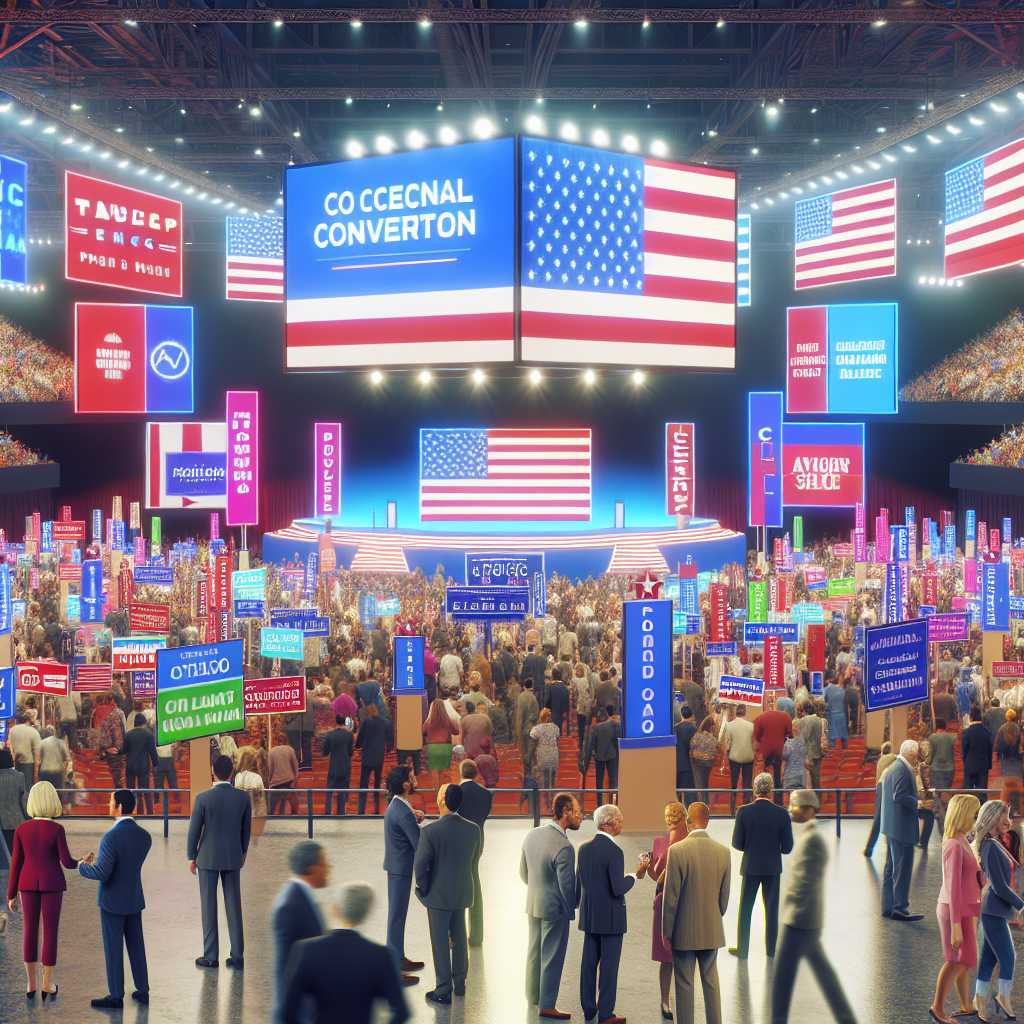The Democratic National Convention: An Overview of Its History and Process
The Democratic National Convention (DNC) is a pivotal event in American politics, where the Democratic Party nominates its candidates for President and Vice President of the United States, approves the party platform, and unites behind their nominees to invigorate supporters as they head into the general election. It provides a unique lens through which the ideals, policies, and strategic direction of the party can be observed.
Historical Context of the Democratic National Convention
The tradition of the Democratic National Convention first began in 1832, making it a longstanding element in the socio-political tapestry of the United States. The convention’s purpose has seen an evolution over time as it moved from a selection process primarily dominated by party elites to a more inclusive event where delegates selected across state primaries and caucuses directly contribute to nominating candidates, reflective of broader voting patterns.
Structure and Functioning of the DNC
Every four years, ahead of the presidential elections, the DNC takes place with confirmed dates and a chosen locale. Delegates converge at this location, representing all U.S. states and territories. Their selection involves a complex interplay between state-determined processes, proportionate allocation of delegates based on vote shares in primaries and caucuses, and the role of unpledged delegates—often referred to as superdelegates—who are free to support any candidate irrespective of primary outcomes.
The Role of Delegates and Constituents at The DNC
Delegates actively participate in various floor votes during the convention to determine the nominee. At times these roll call votes have purely been procedural formalities when a clear candidate has emerged through the primary process. However, there have been historical instances—though rare under current primary rules—where the conventional floor has witnessed contested or brokered conventions.
In modern times, what goes on at the convention extends beyond balloting. It incorporates adopting a comprehensive party platform that expresses the values, principles, and policy stances of the party. This process serves not just as a pledge but also cements the party’s issues-driven agenda.
Keynote Speeches and Prominent Figures
Amplifying its allure as a highly broadcast media event is that keynote speakers ranging from current party leaders, rising stars within the party, or individuals with invigorating tales aligned with party principles take center stage during primetime coverage to maintain nationwide engagement. A deftly chosen array of these figures infuses energy into the electoral base and attempts to sway undecided voters with compelling rhetoric and oratory.
Historical Conventions and Their Impact on Charting Political Trajectories
Examining past DNCs can highlight poignantly transformative moments for both the Democratic Party and the nation’s electoral landscape. Powerful speeches such as Barack Obama’s in 2004 can catapult figures onto the national scene and mark turning points for candidates propelling them into future leadership roles.
The DNC’s Influence on Policy Discourse and Media Narratives
As television coverage increased over decades, so did an enhanced expectation of policy discourse emerging from convention platforms. Detailed analysis from political commentators now regularly shapes public expectations about what post-convention campaign agendas should entail.
Furthermore, controversies or dissent within party ranks have also been historic features that attract media attention; though somewhat rarer in contemporary conventions due to an emphasis on party unity.
Modern Innovations and DNC Adaptations
Notably, advancements in broadcasting and digital technology have enabled innovations like interactive delegate participation via virtual means or live streaming to wider audiences.
